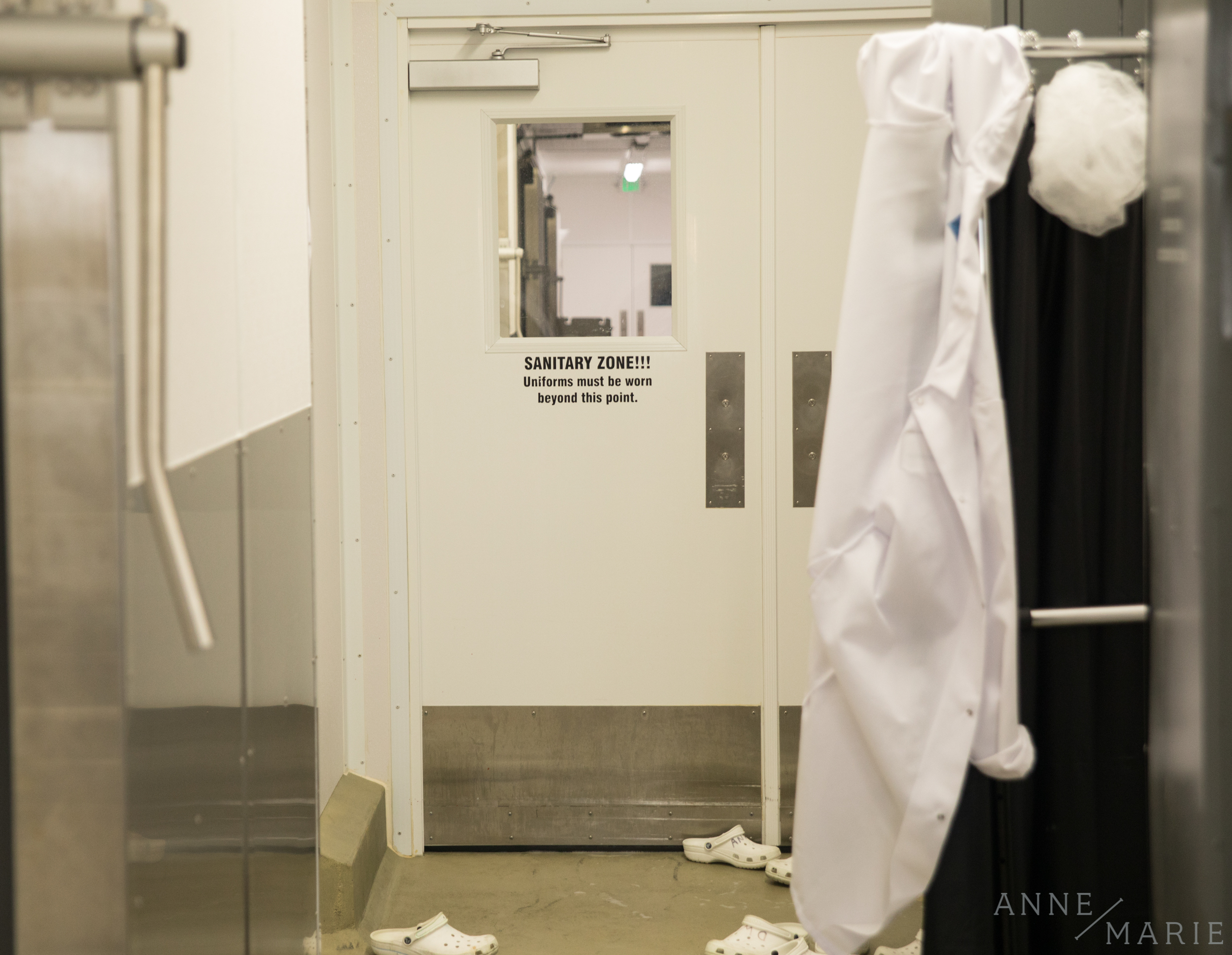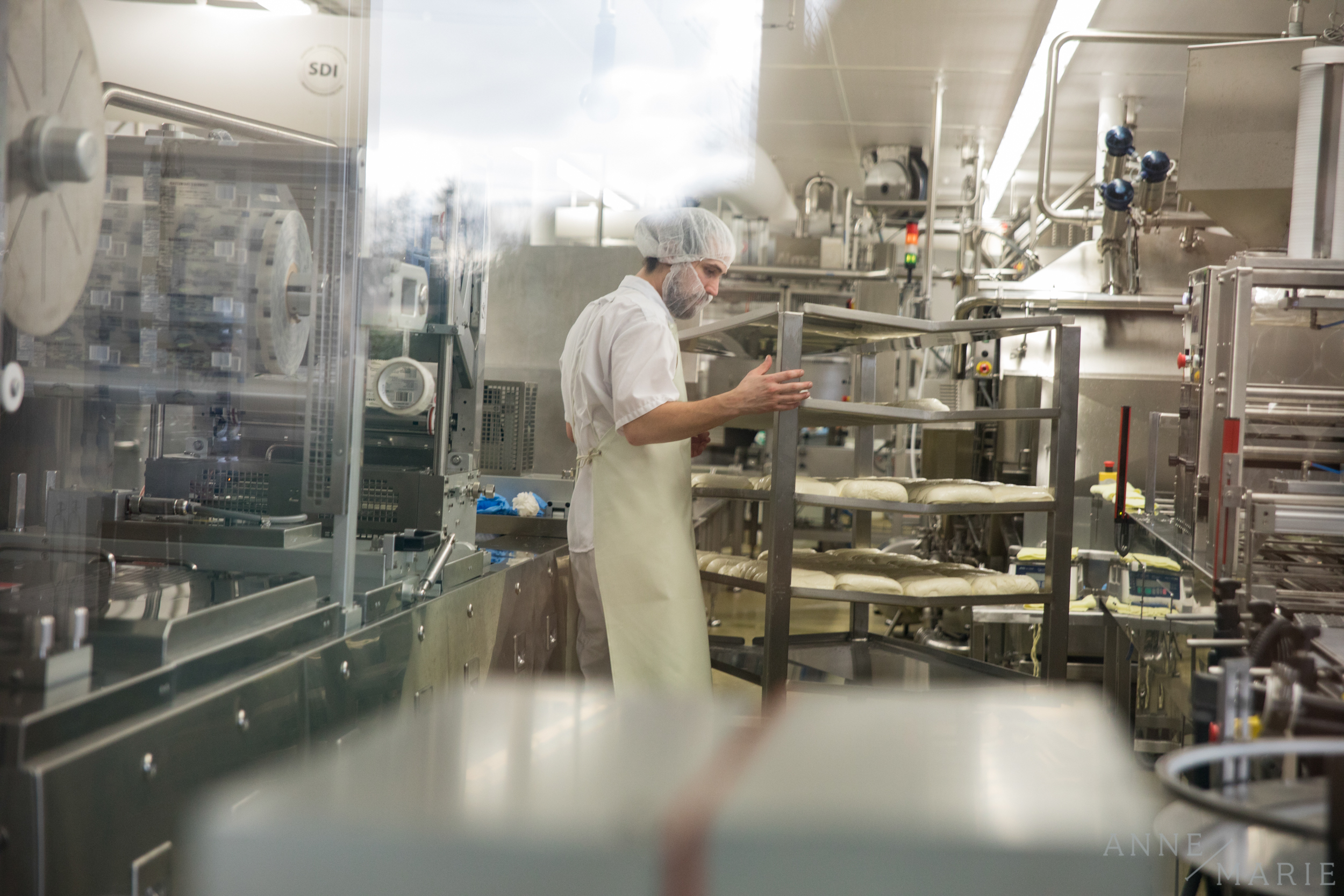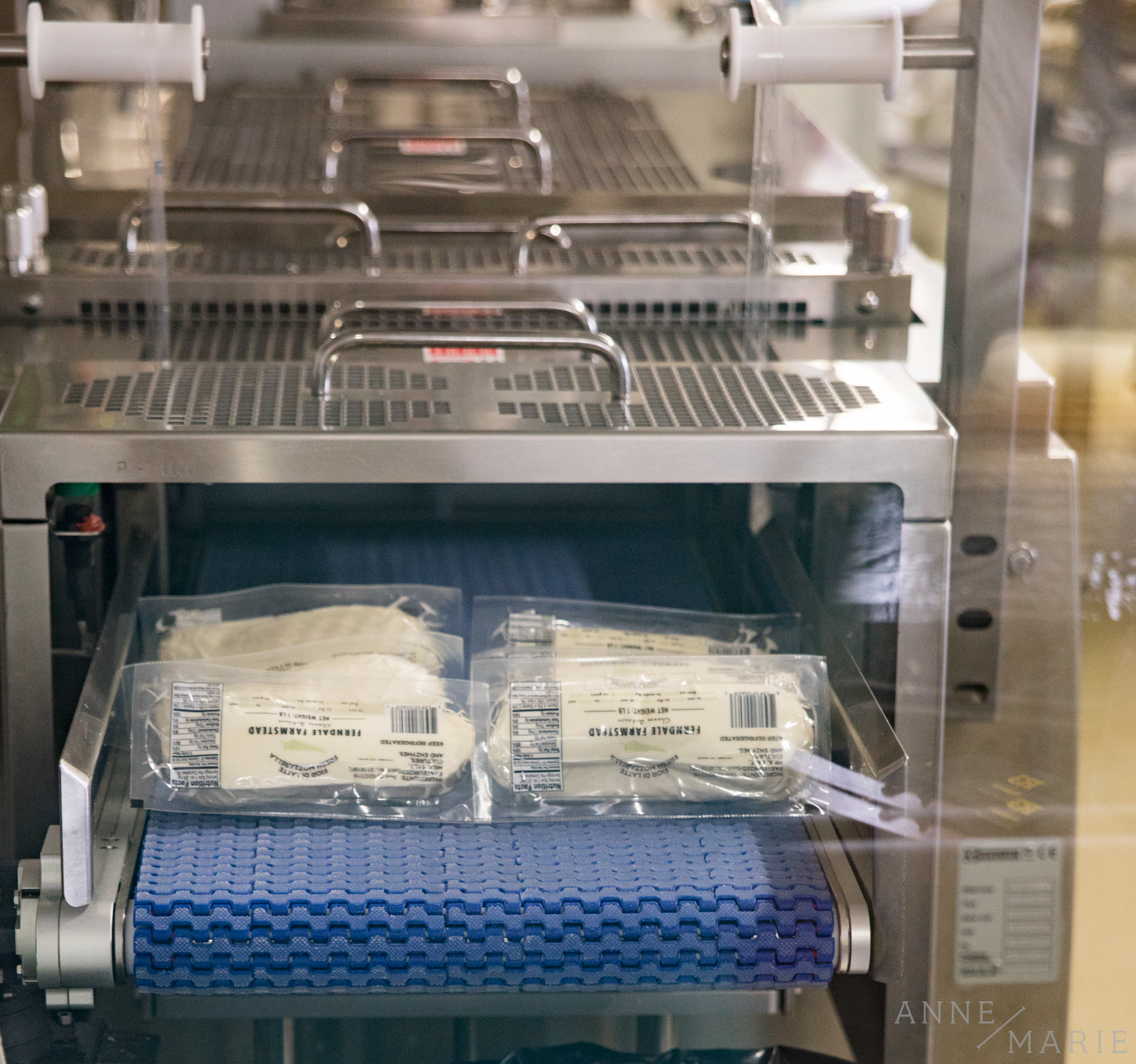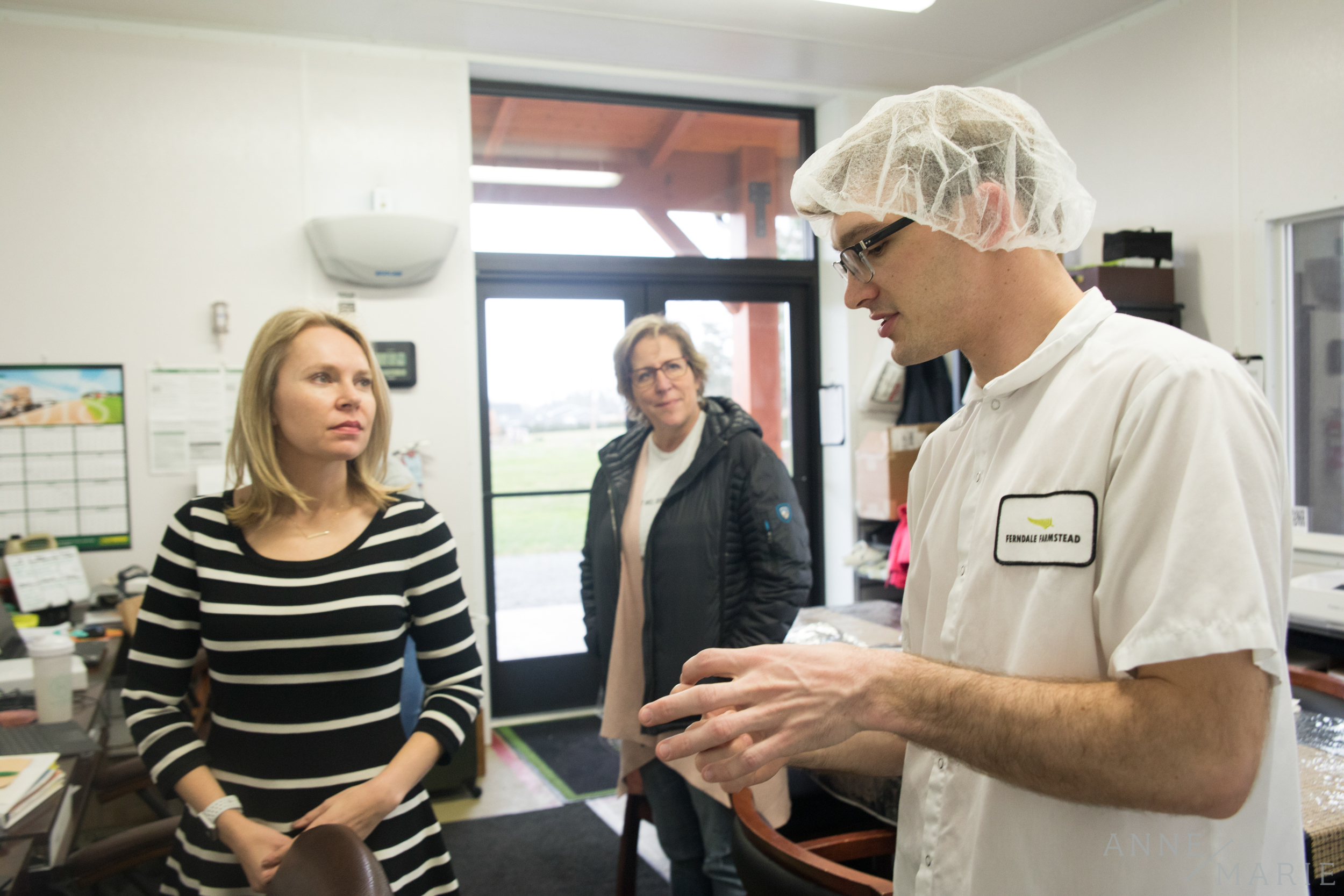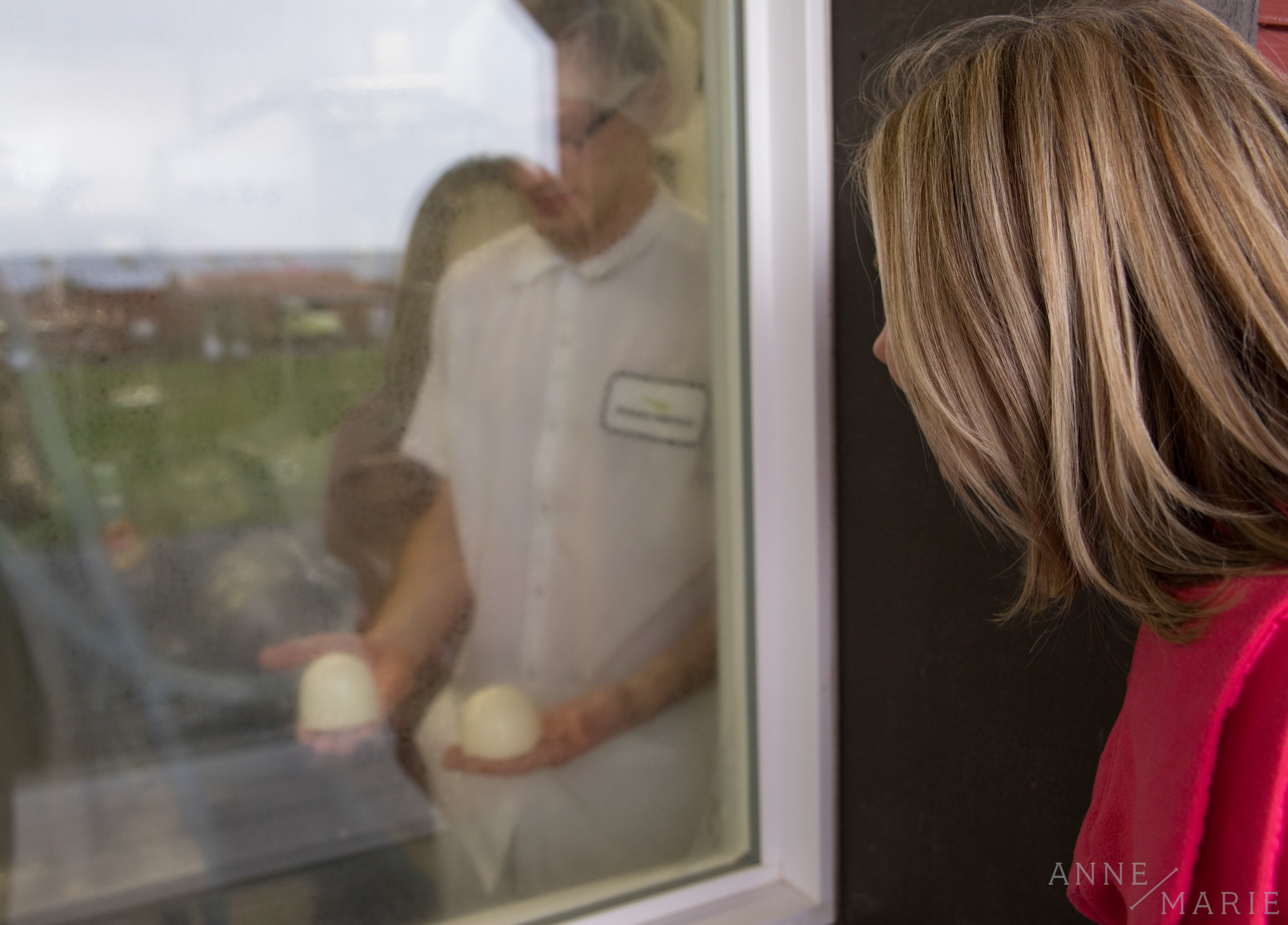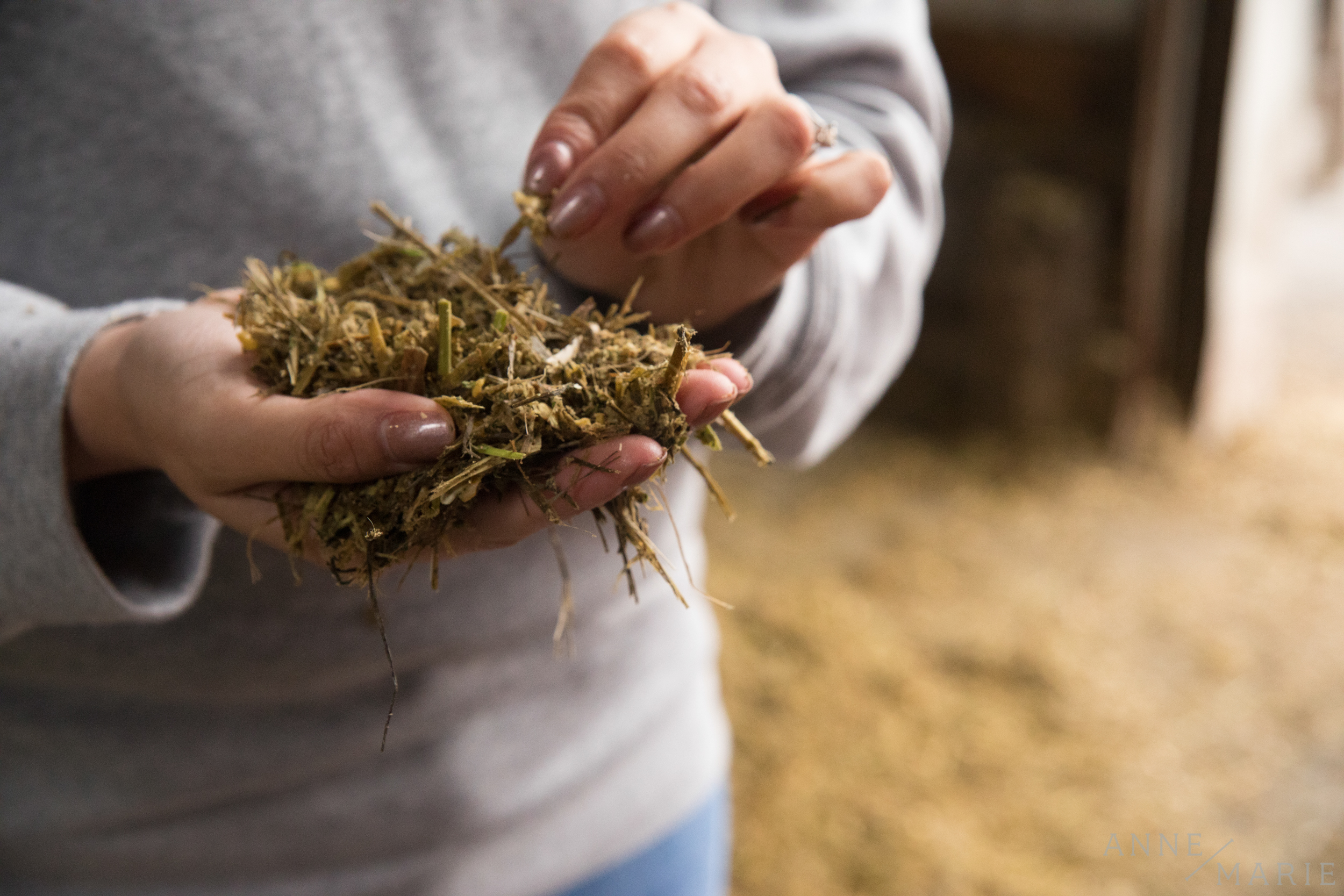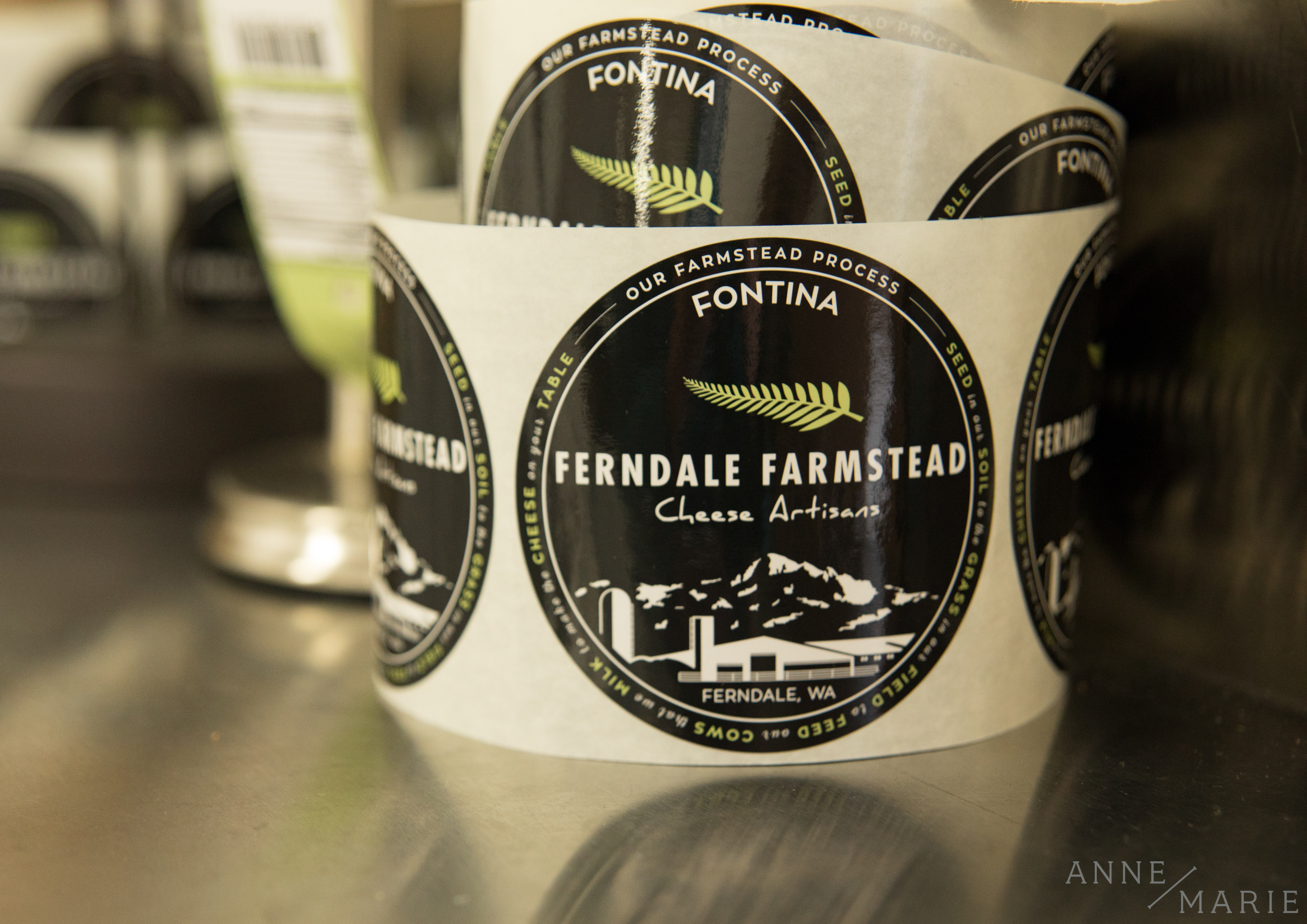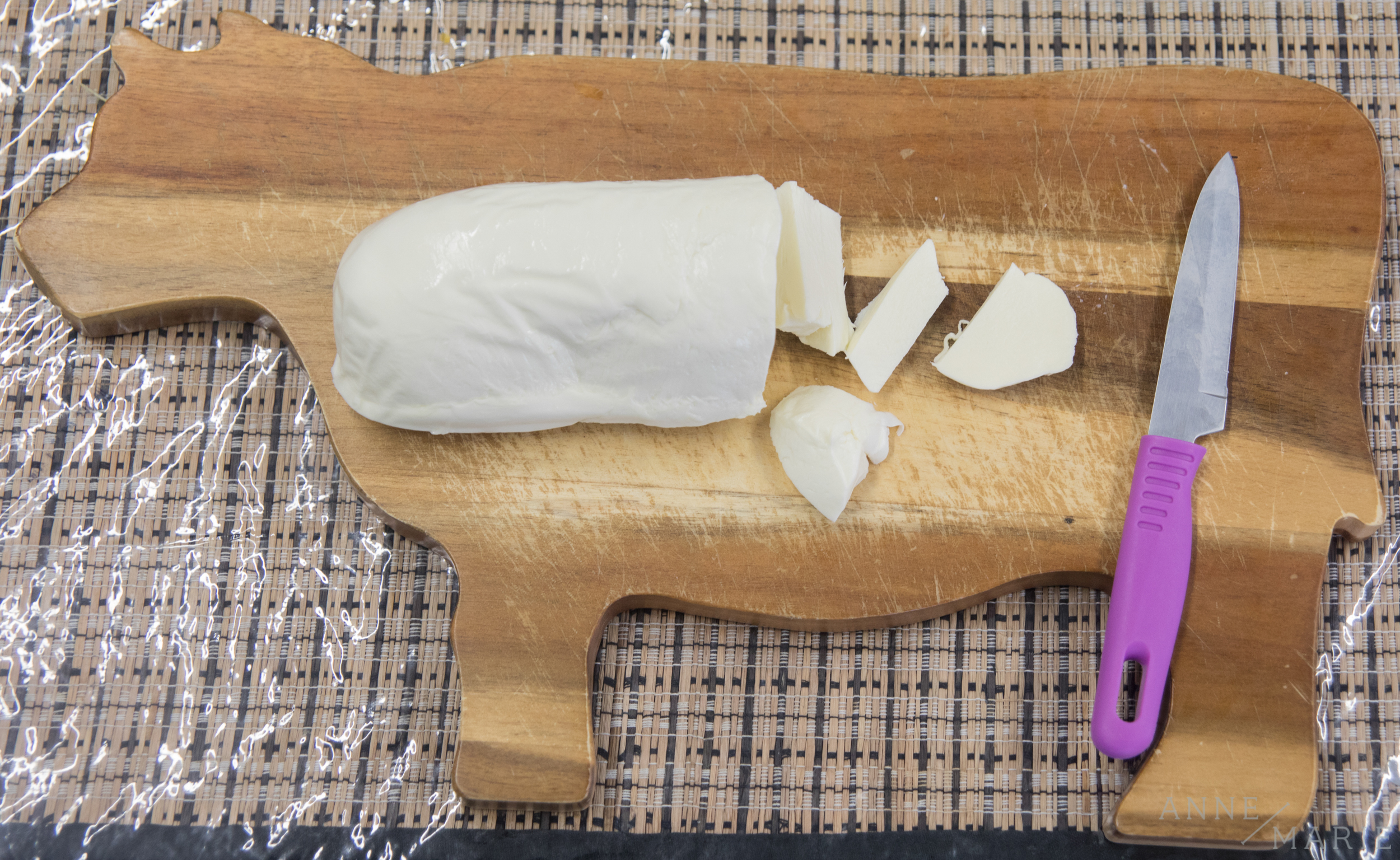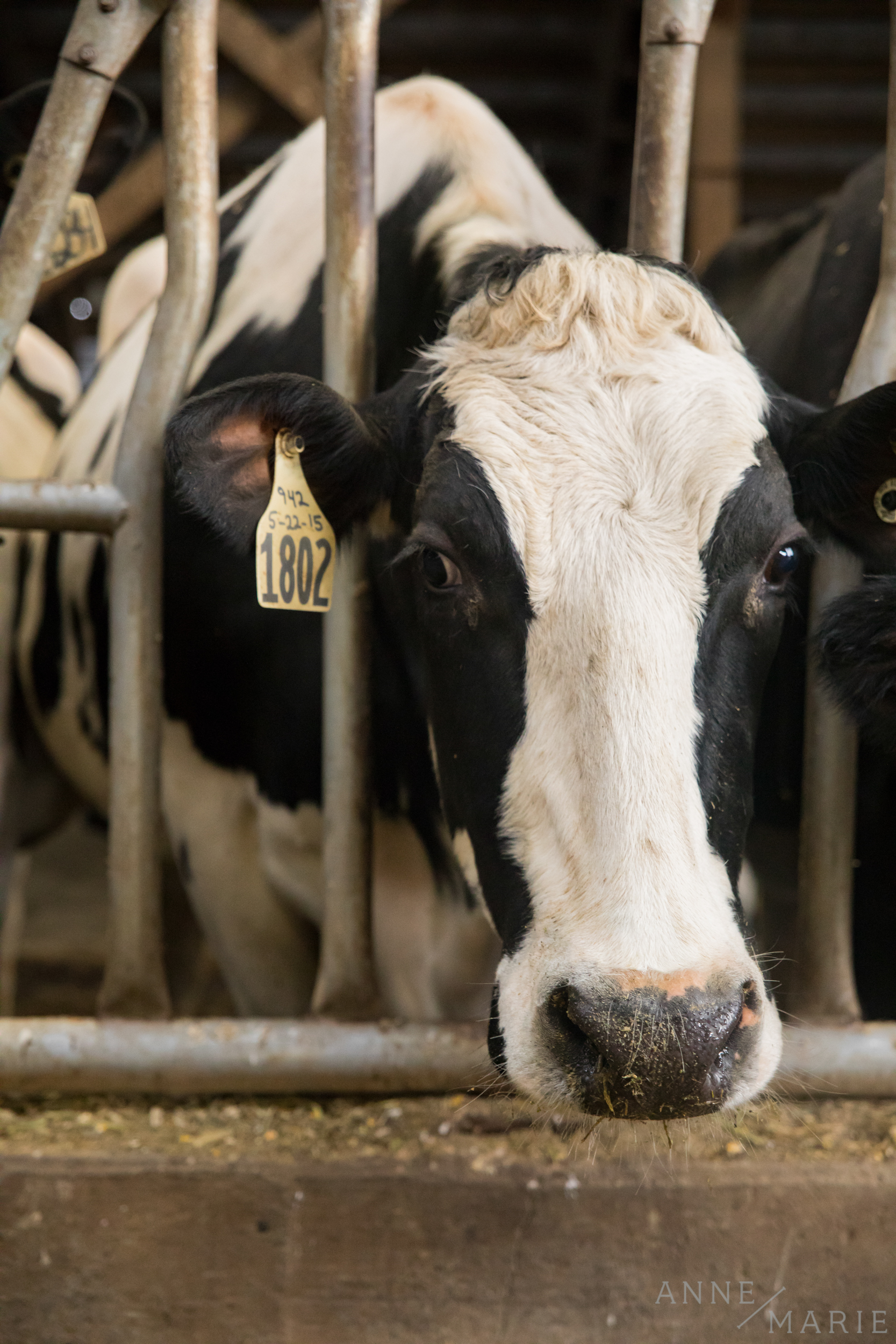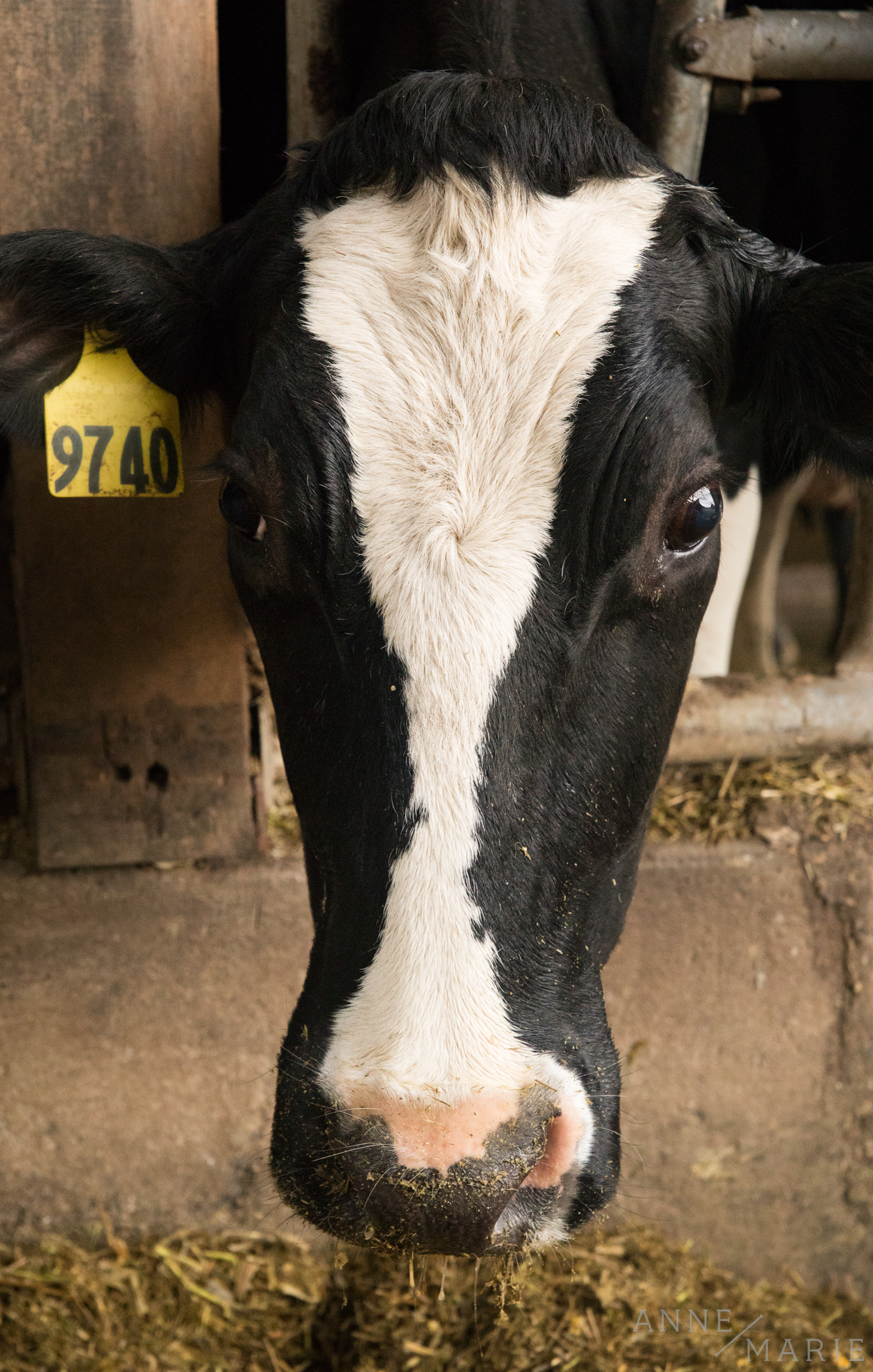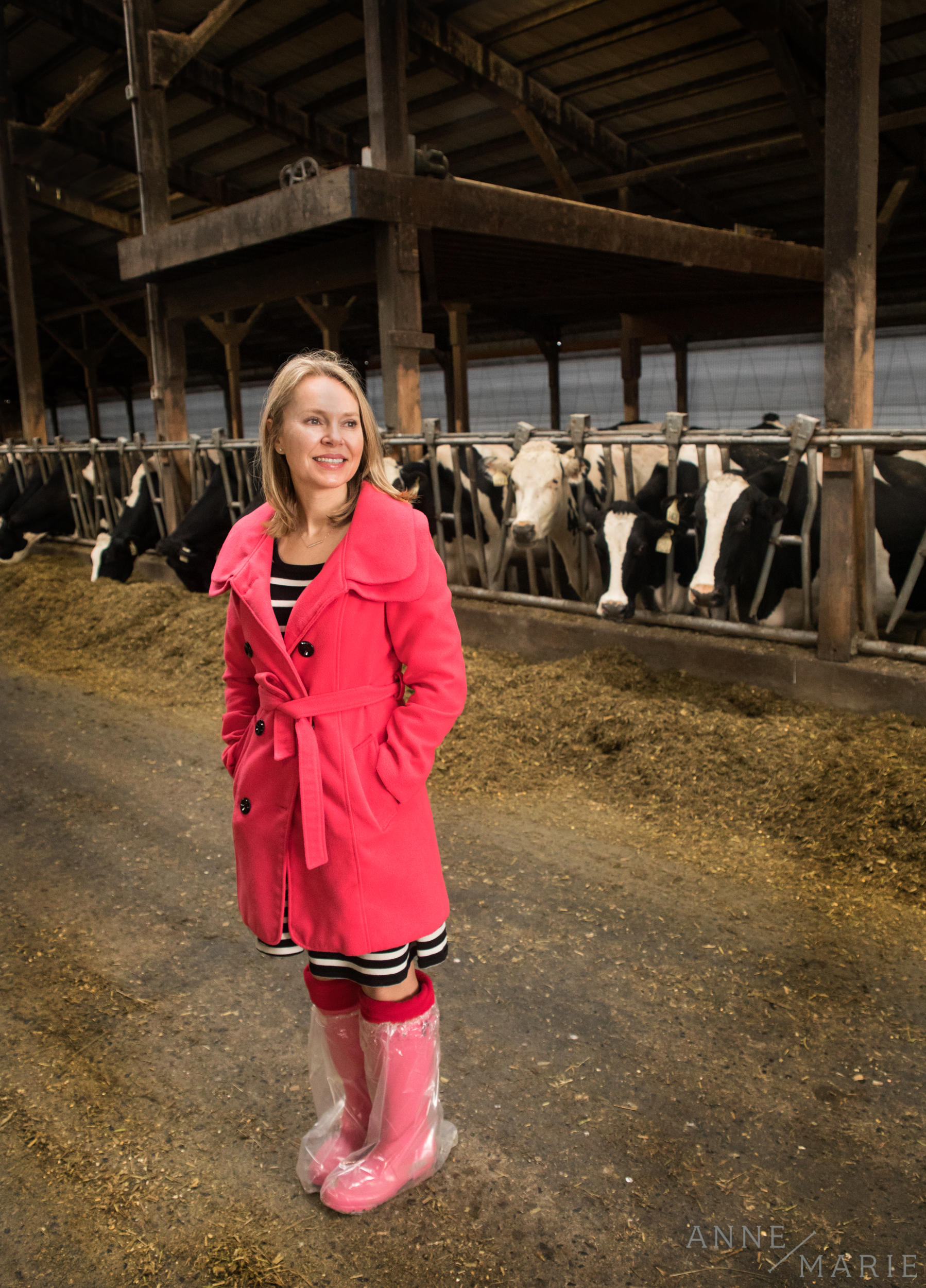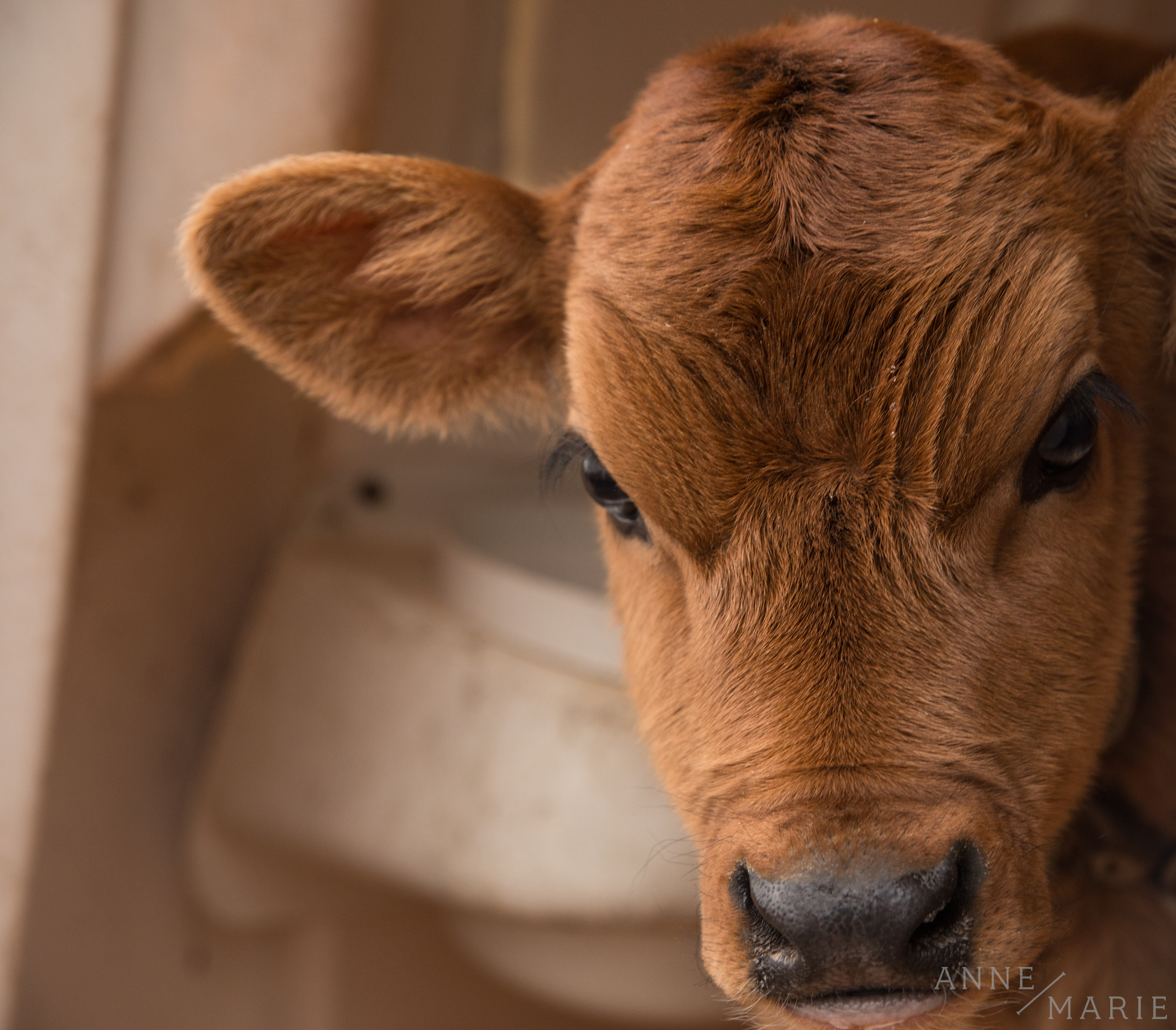Meeting Dairy Cows
I spent much of last week in Olympia, Washington working with the Association of Washington Business on policy issues facing Washington State in the upcoming years. My head was filled to the brim with talk of how we were funding our school system, to the pros and cons of a carbon tax vs a cap and trade system and worker compensation and safety laws. So, my brain was in another place when I got to the Bramble Berry Distribution Center to delve back to all things handmade and DIY. I had completely forgotten that I was scheduled to visit a working farm that manufactured cheeses with the milk that they had just milked from the cows. Good thing I had a pair of extra boots for traipsing around the farm!
Nidia explains the operation to Anne-Marie. The cheesemaking vat can be seen through the windows.
Nidia, shows Anne-Marie around the farm.
Anne-Marie looks at her favorite Guernsey cow.
We visited the glorious Ferndale Farmstead. The setting is a charming, countryside farm, with flocks of birds mid-flight everywhere you look. The cows themselves are more quiet than you’d expect and definitely more endearing than their size would lead you to believe.
It was a complicated operation. As a business owner, I could only stand in awe of the infrastructure this young couple had built and the risk they had taken to do so. All of their industrial cheesemaking equipment was imported from Italy. They had outcropping buildings and barns. They had lots of heavy equipment. Their milking area had big stainless steel pipes that pumped the milk directly from the cows into the cheesemaking vats. This was the only place on the farm that had a strong scent. The rest of the buildings and area smelled fresh and clean or like hay and wood. The entire operation was well thought out and meticulously planned.
The owners (Daniel and Nidia) met in high school (awwwww) and started planning this operation shortly after graduation. It took a full 6 years of planning before they were ready to open the doors. They examined the marketplace, saw the gaps and started to produce a very niche amount of cheese. They use imported cultures and pride themselves on using artisan cheesemaking techniques in a modern setting.
The cows stole my heart. My favorite cows were the Guernsey cattle. Their red hair reminded me of my little redheaded two-legged kiddo at home. Ferndale Farmstead has a mixed herd with multiple breeds of cows. Their philosophy is that it’s not the type of cow that produces a different type of milk consistency, flavor or taste but rather, it’s the diet that you feed them. So, their cows get an specialized diet, designed by a nutritionist specifically for them when they’re being milked. The cows at Ferndale Farmstead get 3 months of vacation a year where they are not milked. The milk is always tested for composition. The fats especially will vary in the wintertime, which affects how the cheese tastes so Daniel and Nidia make subtle changes to the process to keep a consistent taste year-round.
They have a breeding operation at the farm, as well. The babies live in their own little calf igloos and are the cutest little babies ever. They have such big eyes and are very curious. I tried to treat the little baby calf like a dog, holding out my hand so I didn’t scare him. All he did was sort of lick me. The tongue was slimy and rough. The calves seemed so intelligent with their sensitive eyes.
When our tour was over, Daniel and Nidia came out to the office, opened up a fresh pound of cheese. Their cheese truly is dairy’s leap at immortality. Their mozzarella was just the right amount of salt, and had a firm yet pliant texture. It had a glorious mouthfeel. I ended up eating way more than was polite, but it was just so good!
Anne-Marie surveys the barn full of cows.
Anne-Marie pets a baby cow. This cow was about two weeks old. The baby cows live in little igloos until they are old enough to join the herd.
The baby cow poses for a picture.
Though I’ve made mozzarella many times, I got inspired to revisit some of the more mild white cheeses that are the cousin to mozzarella, like scarmoza (a firm, dense mozzarella) or take another leap at making burrata (a pouch of mozzarella filled with a creamy filling).
If you’re in Washington state, you can find their cheeses in many grocery stores, and Costco will soon be getting ready to ship some of them.
Photos by Christina Becker.





